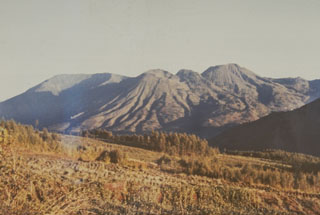Report on Dieng Volcanic Complex (Indonesia) — 28 March-3 April 2018
Smithsonian Institution / US Geological Survey
Weekly Volcanic Activity Report, 28 March-3 April 2018
Managing Editor: Sally Sennert.
Please cite this report as:
Global Volcanism Program, 2018. Report on Dieng Volcanic Complex (Indonesia) (Sennert, S, ed.). Weekly Volcanic Activity Report, 28 March-3 April 2018. Smithsonian Institution and US Geological Survey.
Dieng Volcanic Complex
Indonesia
7.2°S, 109.879°E; summit elev. 2565 m
All times are local (unless otherwise noted)
PVMBG reported that a phreatic eruption at the Sileri Crater lake (Dieng Volcanic Complex) occurred at 1342 on 1 April, ejecting mud and material 150 m high, and up to 200 m in multiple directions. The event was preceded by black emissions that rose 90 m, and then diffuse white emissions that rose 150 m. The report noted that there were not many tourists in the area due to rainy weather; tourists are not permitted within 200 m of the crater rim.
Geological Summary. The Dieng plateau in the highlands of central Java is renowned both for the variety of its volcanic scenery and as a sacred area housing Java's oldest Hindu temples, dating back to the 9th century CE. The Dieng Volcanic Complex consists of multiple stratovolcanoes and more than 20 small Pleistocene-to-Holocene craters and cones over a 6 x 14 km area. Prahu stratovolcano was truncated by a large Pleistocene caldera, which was subsequently filled by a series of cones, lava domes, and craters, many containing lakes. Lava flows cover much of the plateau, but observed activity has been restricted to minor phreatic eruptions. Gas emissions are a hazard at several craters and have caused fatalities. There are abundant thermal features and high heat flow across the area.
Source: Pusat Vulkanologi dan Mitigasi Bencana Geologi (PVMBG, also known as CVGHM)

